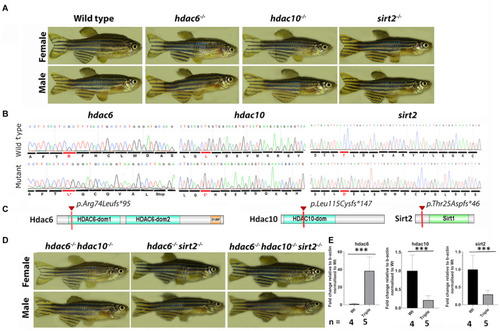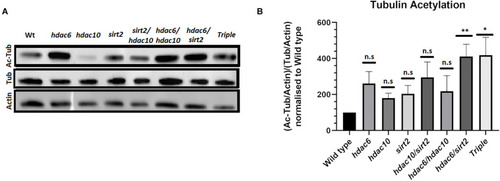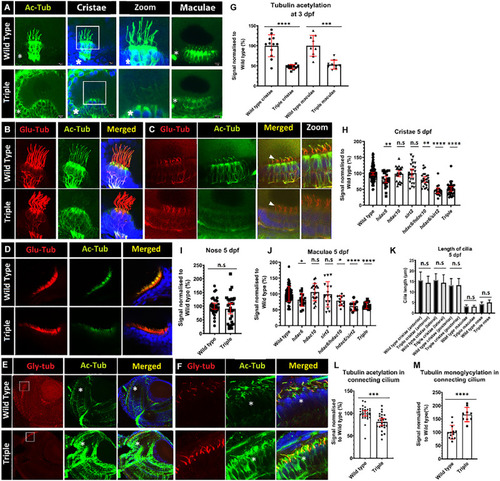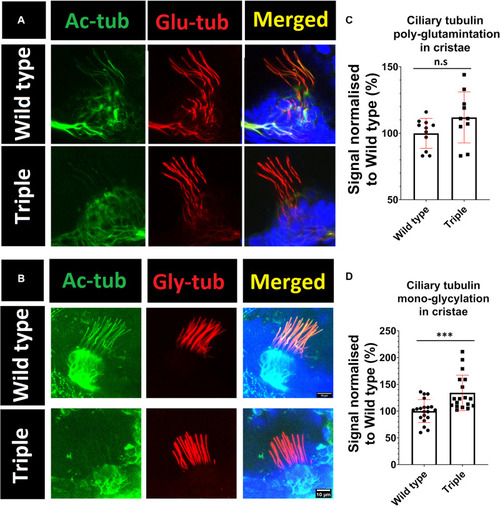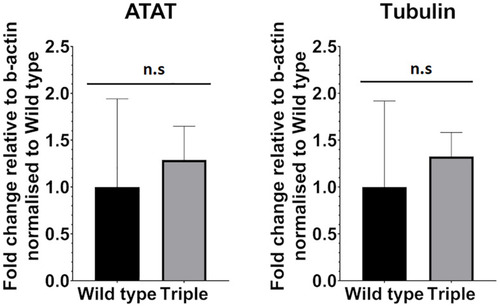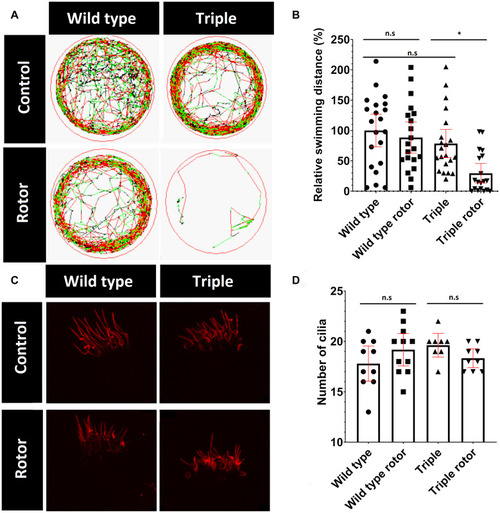- Title
-
Loss of Deacetylation Enzymes Hdac6 and Sirt2 Promotes Acetylation of Cytoplasmic Tubulin, but Suppresses Axonemal Acetylation in Zebrafish Cilia
- Authors
- Łysyganicz, P.K., Pooranachandran, N., Liu, X., Adamson, K.I., Zielonka, K., Elworthy, S., van Eeden, F.J., Grierson, A.J., Malicki, J.J.
- Source
- Full text @ Front Cell Dev Biol
|
1.5-year-old zebrafish do not display any obvious external phenotype. |
|
Level of tubulin acetylation in adult fish eyes. |
|
Decrease of acetylation in cilia in EXPRESSION / LABELING:
PHENOTYPE:
|
|
Chemical inhibition of Hdac6. EXPRESSION / LABELING:
PHENOTYPE:
|
|
Increase in mono-glycylation, but not poly-glutamination, of tubulin in triple mutant cilia. Green acetylated tubulin, red EXPRESSION / LABELING:
PHENOTYPE:
|
|
ATAT-1 and Tubulin mRNA expression levels relative to b-actin expression in Wild type and triple mutants. ( EXPRESSION / LABELING:
|
|
Change in mutant behavior. |

